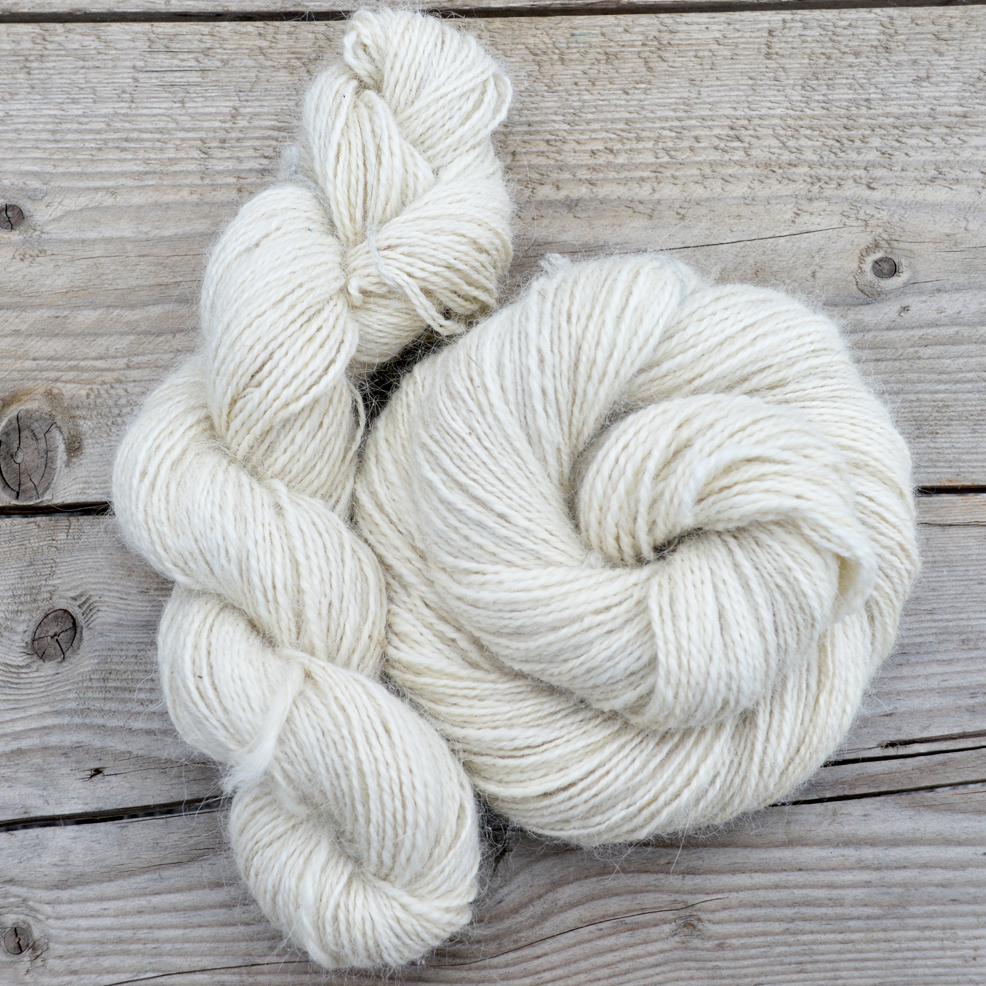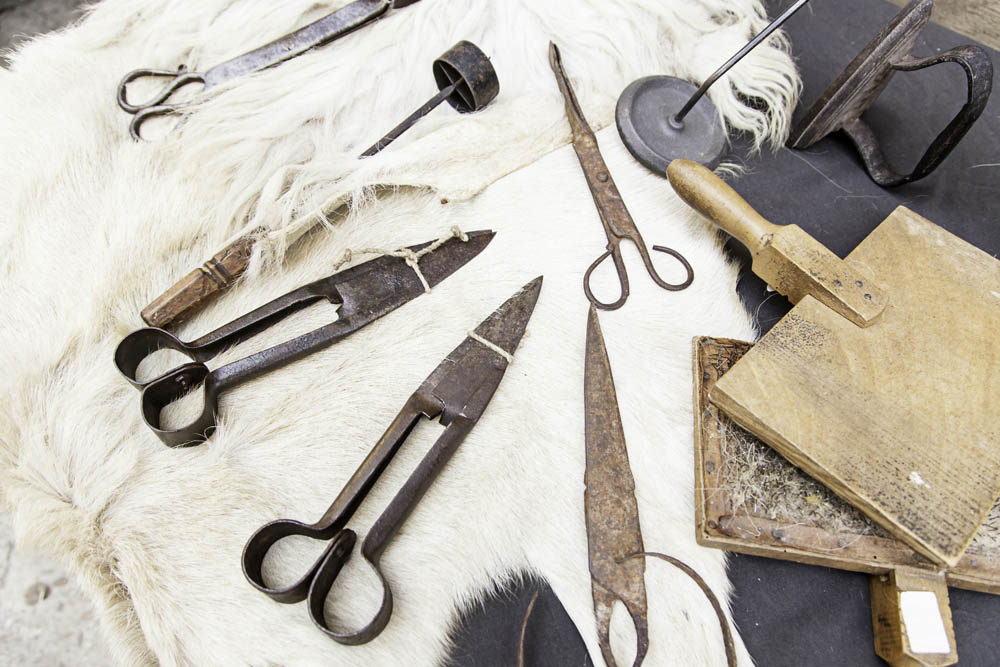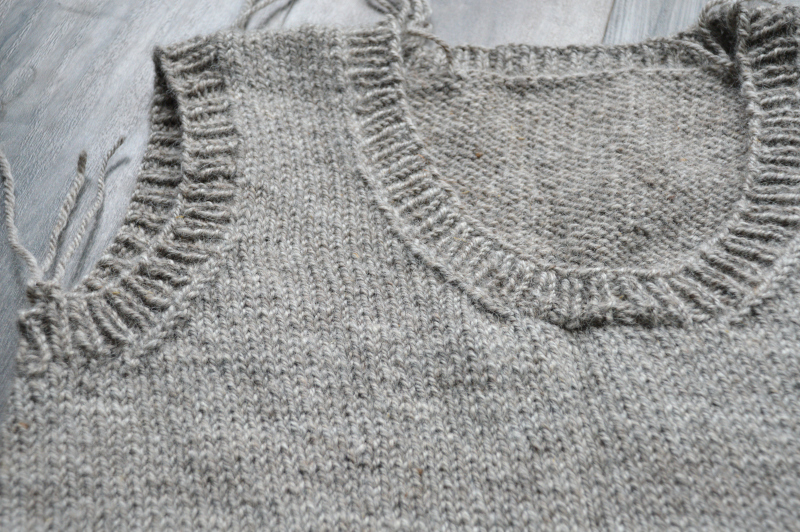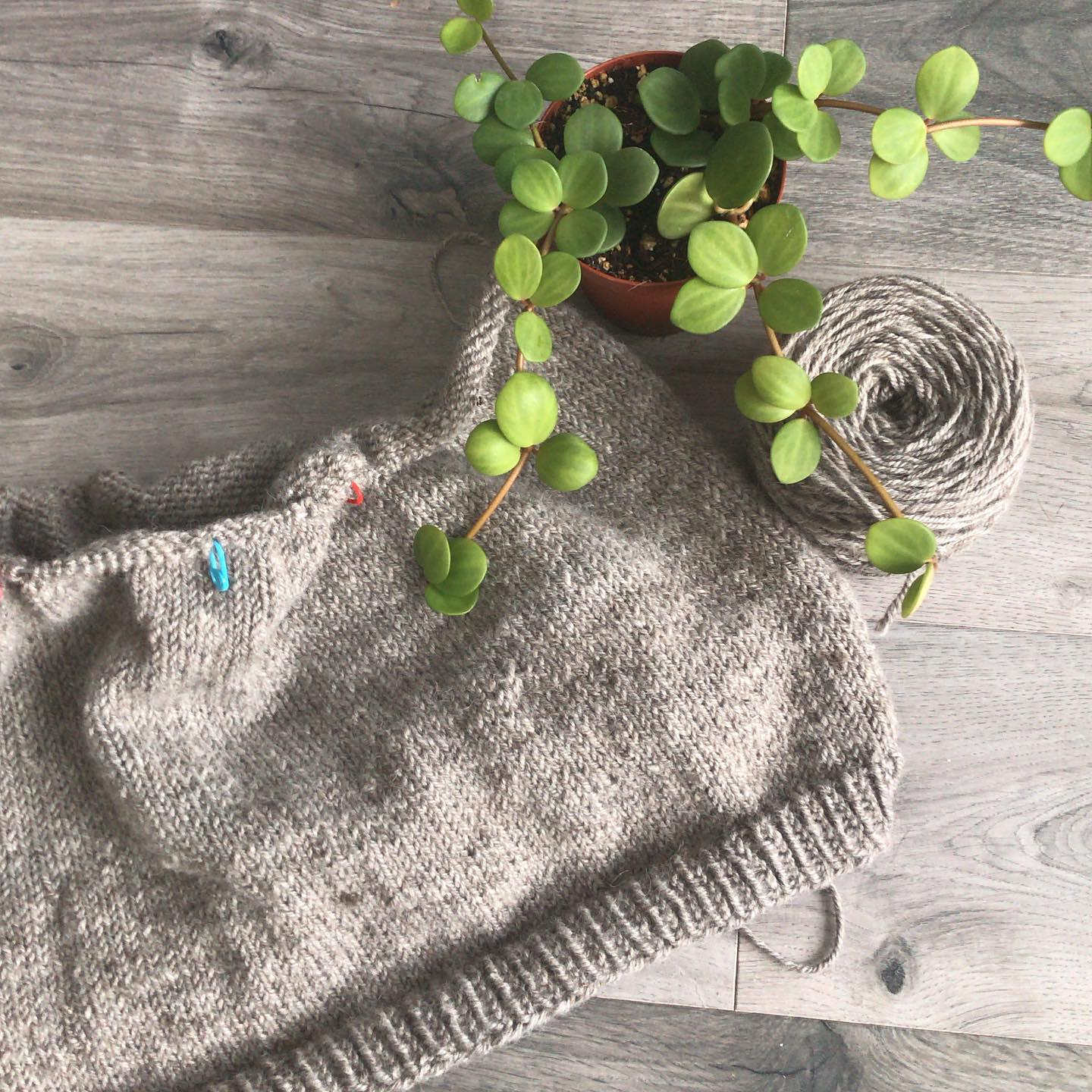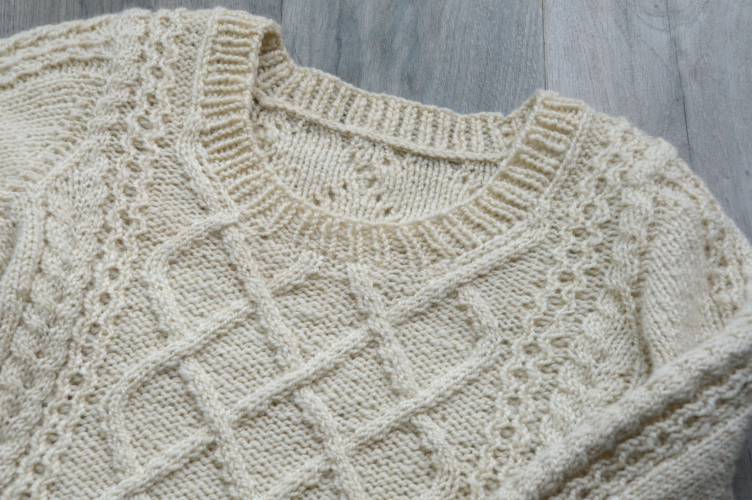Many, many years ago I had attempted to spin llama. I was a pretty new spinner at the time, and in all honesty, at the time with my lack of experience, I found the fibre difficult to handle. And course. Very, very course. Now, looking back on it, I realize the prep (I had bought it from a commercial source) had the guard hairs still in it, and it was matted. It wasn’t a great introduction to this lovely fibre, and for years I lived with the belief that llama just wasn’t for me.
So years go by, my skills improve, and I meet Karen. You can read my interview with Karen right here, but in short, Karen lives about two hours to the northeast of me, and has a farm where she rescues llamas and alpacas (she has chickens and pigs now too!). Karen was very adamant that I give llama another chance, so when shearing time came I acquired three llama blankets from her, not only to add to the shop, but to try out myself.
Flash forward a few months to autumn of 2018. Unfortunately Karen’s much beloved, Baby, passed away unexpectedly and I knew it was time to dive in and make her something from his fibre that she could keep.
The Wash
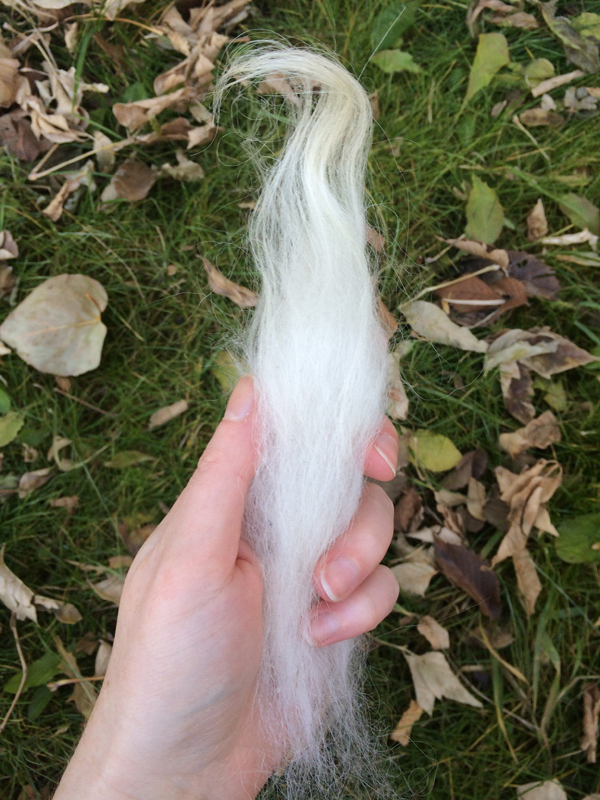
I separated out Baby’s fibre lock by lock and washed to maintain that structure, because I knew I’d be combing for a worsted prep. I generally wash my sheep fibre in about 70C, but with camelids (the name for the biological family of llamas and alpacas, which also includes camels and vicuñas), I go slightly cooler since you don’t have to worry about melting that lanolin off – somewhere around 55-60C mark. After my standard wash process, I spun the fibres out in the washing machine, then laid them out to finish air drying.
Next step is separating out the top coat. I use the same method for separating out double coated sheep fibres – I grasp the top coat with one hand, and the cut end of the fibre with the other, and pull. It’s that easy (if time consuming, depending on how much you’re processing). The nice thing with fibres like llama and alpaca, however, is because of the smoothness of the fibre this step can be relatively painless, with the top coat sliding right out. What you’re left with is a nice, soft undercoat, ready for your prep.
The Prep
I hand combed my llama. I had briefly flirted with the idea of carding because it sounded interesting, but Baby’s undercoat staple is long – some sections 5″ in length – and combing seemed the way to go for sake of ease. I also knew I wanted to create a yarn to play into the fibre’s natural drape and weight, so combing it was.
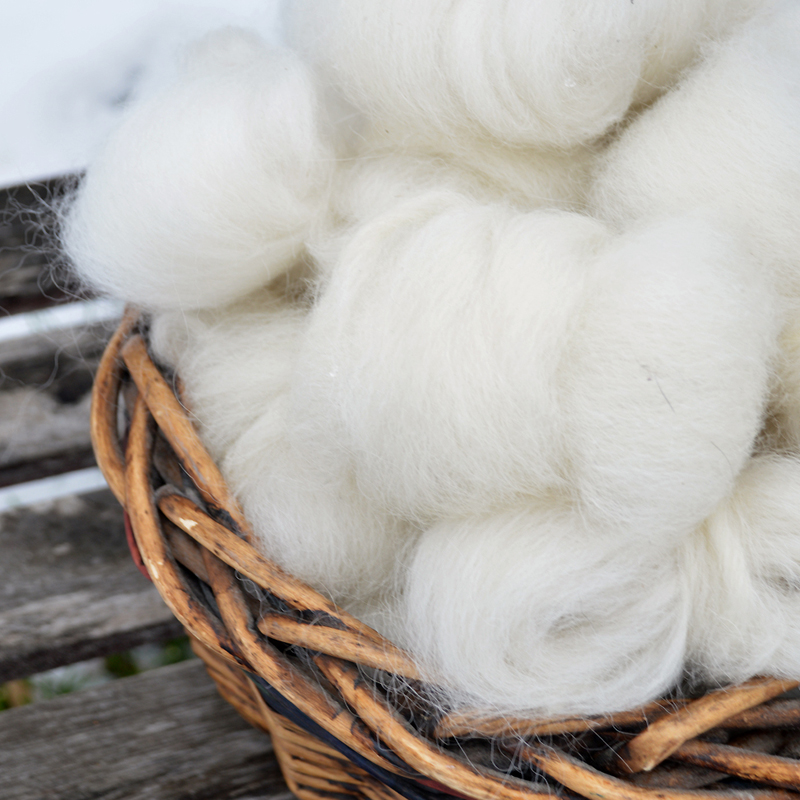
The first thing I noticed while I was combing was the sheer weight of this fibre. If you’ve worked with alpaca before you may be familiar with its additional weight versus sheep wool (it’s part of the reason why alpaca gives you that drape to your yarn), but I can wholeheartedly say that it is even more pronounced in llama. The hand combed top itself felt very heavy, and I knew my grist would reflect that later on during the spin.
It’s fair to say during the prep, I kept thinking of how this was very much like, but an even more extreme version of alpaca in terms of feel. The weight, the drape, the silkiness, it’s all very reminiscent of, but much more prominent, than alpaca.
The Spin

I had initially planned for a light worsted weight 2-ply yarn. I did not get that yarn, and let me tell you why: without thinking, I started my spin like I would for wool.
I knew this would be a slippery fibre, and I have a good amount of experience with spinning alpaca. But even though I knew from the wash and prep that this fibre was similar to alpaca, I didn’t adjust my spinning accordingly from the outset. All wool has tooth – even the finest wools have a toothiness that aids in those fibres catching one another during the spin. Llama does not have the same amount of tooth, so the spinning needs to be adjusted in order to get those fibres twist locked.
I popped my ratio on my wheel to 6.7:1 (because I wanted to preserve softness), and spun almost like I would for a long wool. I let the length of the fibre, and my experience with longer stapled fibres, take over good sense and I just didn’t put in enough twist.
Let me say that again: llama needs a lot of twist. Much more than you would think. So my first 20-30 yards were spent cursing my wheel and my hands, as my lovely llama drifted apart endlessly. I kept lowering the uptake, and treadling faster. Finally, I did hit that sweet spot where it was just twist locked enough, but also still quite soft, but at that point I was spinning more in the DK-weight range. So, I just kept going with the weight at that point. I didn’t have a pattern in mind (although I knew I wanted it to be a toque) and a DK weight would be a perfectly fine weight for a yarn destined to be a toque.
Once I changed my thinking, and stopped spinning like I would for wool, the spin became a lot easier. If you haven’t worked with 100% llama before I would highly recommend you sample first, if nothing else, just to get a feel for it.
Next time I spin llama I’m going to go up a ratio – to 12:1, which is what I ended up plying at (next time I’d probably keep that ply ratio the same, or go up if I wanted a tighter twist). This should help with keeping that twist lock in, and for consistency; since I struggled a bit with this spin, it resulted in a less-than-ideal consistency than I like.
My struggles did result in a yarn with some definite weak spots, so to make up for this, I ended up slightly fulling and thwacking it. The original plan had been a simple soak and snap, but the weaknesses in the singles needed that extra structure, so I listened to the yarn and fulled.
The skeins have spots of plied yarn has spots that are almost 20 WPI, while other parts are closer to 9 WPI. Mostly though, it averaged out to 11-12 WPI, which is right in that sweet spot for a DK weight. The resulting yarn also had quite a bit more pronounced halo than I was expecting for a hand combed/worsted spin (my finishing definitely affected that). While it wasn’t the intention to have that halo, I ended up loving it.
In fact, I ended up loving the whole yarn in general. Quite a lot. More than I would generally for a yarn that didn’t meet my initial idea of what it would be, and I think that has to do with a few factors. The hand of this yarn is like nothing else – it has a silky feel, but is also kind of fuzzy. The heft and drape is beautiful, just holding a skein you can feel it. Despite the inconsistency, low ply twist, and fuzziness, it ended up having quite beautiful stitch definition that lent itself quite nicely to cables.
And, most importantly, it will be warm. I wanted a yarn that would really make a warm toque for Karen – living where we do, it’s very, very cold for significant parts of the year. I wanted the toque to be pretty, but I also wanted it to be practical.
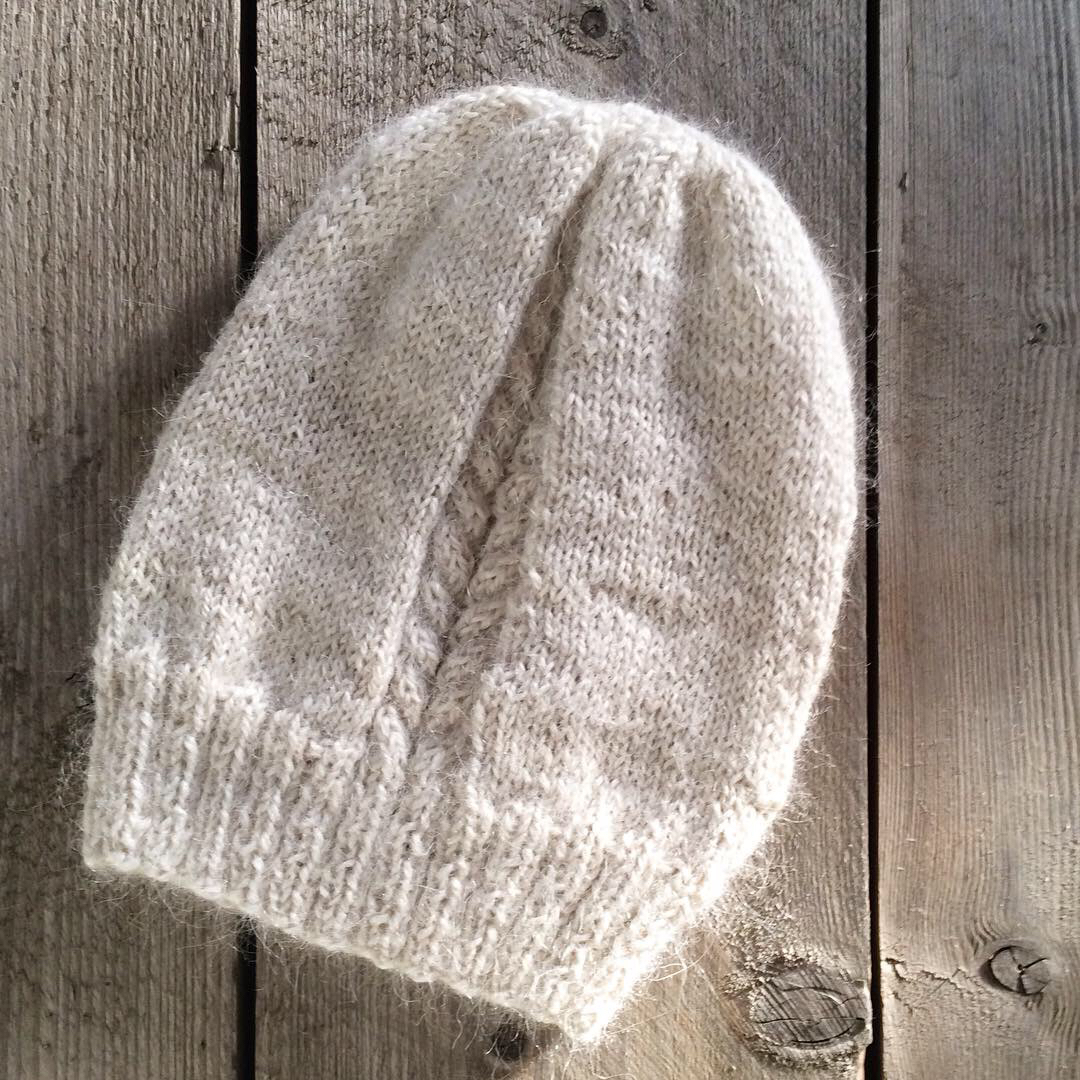
Final Thoughts
I love this yarn, and I’m a total llama convert. It’s such a unique fibre, and you can feel the warmth of a knit made out of it (which is exactly what Karen told me to expect!). The heft of this yarn makes it ideal for accessories, especially if you want some drape, and its unique characteristics make it like nothing else. I’m really excited this summer to experiment more with blending – a llama and long wool blend would be a beautiful drapey lace shawl, and I have crazy visions of down wool socks with a hint of llama in them too for extra warm feet during the winter.
The Yarn Stats
Fibre: Baby the Llama, 3-4″ undercoat staple length (some parts almost 5″).
Singles: Spun 6.7:1 ratio, short forward draw.
Plies: 2-ply, plied on 12:1, 30° ply angle.
Finishing: Moderately fulled and thwacked.
Skeins: 365 yds, 214 grams
Grist: 773 yds/lb
